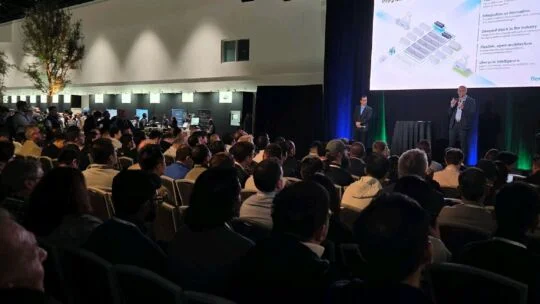
Im vorherigen Teil unsererBlogreihe zum Aufbau eines nachhaltigen UnternehmensWir haben verschiedene bewährte Methoden zur Datenerhebung besprochen.
Sobald die aufwendige Datenerhebung abgeschlossen ist, sind die Unternehmen bestrebt, die erhobenen Daten zu nutzen, um die Nachhaltigkeitsleistung ihrer Organisation zu bewerten und den Stakeholdern über diese Fortschritte zu berichten.
Doch vor diesem Schritt muss sichergestellt werden, dass die aus allen Bereichen des Unternehmens stammenden Daten fundiert und vertrauenswürdig sind. In diesem Beitrag stellen wir Ansätze zur Datenvalidierung vor.

Gewährleistung der Datenintegrität
Jede Bewertung der Nachhaltigkeitsleistung eines Unternehmens hängt von der Genauigkeit der Daten ab. Angesichts der zunehmenden Überprüfung von Nachhaltigkeitsberichten ist es wichtig, Vertrauen in diese Daten zu schaffen, da fragwürdige Informationen unerwünschte Aufmerksamkeit und Reputationsverluste nach sich ziehen können. Darüber hinaus deutet alles darauf hin, dass einige Regierungen in absehbarer Zeit börsennotierte Unternehmen zur Offenlegung ihrer Nachhaltigkeitskennzahlen verpflichten werden.
Der Bedarf an verlässlichen Nachhaltigkeitsdaten betrifft alle Interessengruppen. Kunden benötigen sie zur Validierung ihrer Lieferketten, Investoren wollen Greenwashing in ihren Portfolios ausschließen, und Berichtsstellen fordern zunehmend mehr Transparenz. Um diesem wachsenden Bedarf gerecht zu werden, ist es jetzt an der Zeit, unsere Systeme und Mechanismen zur Validierung der Genauigkeit unserer Nachhaltigkeitsdaten deutlich zu stärken. Es gibt verschiedene Wege, die Nachhaltigkeitspraktiken Ihres Unternehmens abzusichern.
Interne Audits
Bei Flex umfassen unsere Datenvalidierungsmechanismen mehrere Ebenen, und unsere erste Reihe von Genauigkeitsprüfungen erfolgt über interne Überprüfungsprozesse, die wir vor acht Jahren eingeführt haben.
Wir weisen jeder unserer drei Regionen – Amerika, Asien und Europa (einschließlich Naher Osten) – einen internen Prüfer zu. Sobald unsere Standorte monatlich Datensätze einreichen, gleichen diese Prüfer diese mit den jeweiligen Datenquellen ab. Beispielsweise stammen einige unserer Nachhaltigkeitsdaten aus Rechnungen; jeder Standort bezieht seine Daten zum Wasserverbrauch aus der Wasserrechnung. Unsere Prüfer überprüfen dann die Richtigkeit dieser Position anhand einer Rechnungskopie. Treten Probleme auf, arbeitet jeder Prüfer eng mit den Ansprechpartnern an seinem jeweiligen Standort zusammen, um diese zu beheben und gegebenenfalls Anpassungen vorzunehmen. Neben der Überprüfung auf Dateneingabefehler suchen unsere internen Prüfer auch nach Inkonsistenzen und Unregelmäßigkeiten. Sollten wir beispielsweise ungewöhnliche Spitzen im Stromverbrauch feststellen, untersuchen wir diese und klären die Ursache.
Der nächste Genauigkeitsfilter kommt am Ende jedes Quartals, wenn wir die Daten mithilfe eines Dashboards aus Trendlinien und Diagrammen analysieren. Diese Visualisierungen helfen uns, etwaige Unregelmäßigkeiten aufzudecken und nach Erklärungen zu suchen, die bei den monatlichen Audits nicht aufgedeckt wurden.
Der nächste Kontrollpunkt ist unser jährliches Audit vor der Veröffentlichung unseres Nachhaltigkeitsberichts. Bei dieser abschließenden Prüfung erfassen wir die Daten auf verschiedene Weise und stellen sicher, dass sie auch nach detaillierter Analyse korrekt sind. Beispielsweise bitten wir unsere Standorte, das monatlich anfallende Abfallvolumen in Restmüll, Wertstoffe und Sondermüll zu klassifizieren. Im Rahmen des jährlichen Audits führen wir Quervergleiche durch, indem wir die Aufschlüsselung des jährlichen Recyclingabfalls nach Materialarten wie Glas, Karton und Aluminium überprüfen. Wir erwarten, dass die Summe des Wertstoffabfalls nach Materialart und die Summe des Wertstoffabfalls nach Volumen der letzten zwölf Monate übereinstimmen.
Unser Risikomanagement-Team, das Teil unserer Finanzabteilung ist, analysiert unsere Daten ebenfalls unter dem Gesichtspunkt der Risikobewertung. Die Häufigkeit dieser Prüfung ist nicht festgelegt – und das ist für uns Best Practice, da es unsere Agilität fördert.
Wir setzen einen proaktiven, kontinuierlichen Prozess zur Überwachung wichtiger Leistungsindikatoren ein, der uns hilft, Anomalien zu erkennen und unsere Fortschritte bei der Zielerreichung zu kontrollieren. Diese fortlaufenden Prüfungen stärken zudem das Vertrauen in die Daten. Dadurch vermeiden wir, unerwartete Unstimmigkeiten erst dann beheben zu müssen, wenn wir unter Zeitdruck stehen oder Prüfungsmitteilungen von der Finanzabteilung erhalten.
Auditierung unserer Lieferanten
Da wir sicherstellen, dass die Geschäftspraktiken unserer Lieferanten unseren Nachhaltigkeitszielen entsprechen, wenden wir auch einen Prozess zu deren Prüfung an.
Wir verpflichten unsere Lieferanten zur Ausfüllung eines Lieferantenbewertungsfragebogens (SAQ) und zur Einhaltung der Anforderungen von Flex, einer Sozial- und Umweltbewertung auf Grundlage der Prinzipien des Verhaltenskodex der Responsible Business Alliance (RBA). Im Rahmen unseres Lieferantenbewertungsprozesses prüfen wir die Antworten der Lieferanten auf den Fragebogen, einschließlich einer ergänzenden internen Risikobewertung. Im Anschluss daran entscheiden wir, ob ein weiteres, physisches Audit erforderlich ist. Falls ja, kontaktieren wir unsere Lieferanten je nach Bedarf per E-Mail, Telefon und durch Vor-Ort-Besuche.
Audits durch Dritte
Wie bei vielen Unternehmen üblich, nimmt Flex die Dienste eines externen Prüfanbieters in Anspruch, der für die Überprüfung der Richtigkeit verschiedener Aspekte unserer Nachhaltigkeitsberichterstattung qualifiziert ist. Tatsächlich gibt es Daten, die nicht einfach oder ohne weiteres überprüft werden können, wie beispielsweise die Anzahl der Mitarbeiter, die sich ehrenamtlich in unseren Gemeinschaftsprogrammen engagieren.
Wie auf der letzten Seite unserer aktuellen Nachhaltigkeitsberichte ersichtlich, stellt ein Wirtschaftsprüfer ein Gütesiegel aus, analog zur Bestätigung von veröffentlichten Finanzergebnissen durch Wirtschaftsprüfer. Unser Wirtschaftsprüfer validiert bestimmte qualitative und quantitative Daten, indem er rund 30 unserer Standorte auswählt und Führungskräfte aus den Bereichen Betrieb, Gesundheit und Sicherheit sowie weitere Fachexperten befragt.
Überlegungen zur Erlangung von Zusicherungen:
- Nachhaltigkeitsaudits bieten zwar eine grundlegende Sicherheit, es fehlt ihnen aber noch immer an einem einheitlichen, globalen und verbindlichen Standard.
- Bestimmte Rankings und Aussagen erfordern Zertifizierungen und Bestätigungen von anerkannten Dritten. Beispielsweise bietet die RBA einen weithin akzeptierten Prüfrahmen für Nachhaltigkeit in unserer Branche der Elektronikfertigung. Ein zentrales Programm der RBA ist dasValidiertes Bewertungsprogramm (VAP), das auf vorab zugelassene externe Prüfer angewiesen ist, um Compliance-Standards zu überprüfen.
- Auch wenn die Unterzeichnung durch einen Wirtschaftsprüfer derzeit in keiner Gerichtsbarkeit vorgeschrieben ist, sollten Sie sich über die gängigen Praktiken in Ihrer Branche und Gerichtsbarkeit informieren.
- Wenn die Durchführung von Audits in Ihrem Zuständigkeitsbereich und Ihrer Branche schwierig ist, sollten Sie die Komplexität Ihrer Daten berücksichtigen. Flex stellt, wo immer möglich, detaillierte Daten bereit; beispielsweise unterteilen wir die Emissionen der Bereiche 1, 2 und 3. Je detaillierter die Daten, desto höher das Fehlerpotenzial, das entsprechend berücksichtigt werden muss – und genau hier kann die Validierung durch Dritte von großem Wert sein.
Es gibt zahlreiche Ressourcen für Organisationen, die mit dem Thema beginnen möchten. Organisationen wie die Responsible Business Alliance und die Internationale Organisation für Normung (ISO) können dabei helfen. Externe Wirtschaftsprüfungsgesellschaften, die für Risiko- und Finanzprüfungen eingesetzt werden, wie beispielsweise PwC, EY, Deloitte und andere, sind ein empfehlenswerter Ausgangspunkt. Auch die Kommunikation mit dem Enterprise-Risk-Management-Team oder den für die externe Berichterstattung zuständigen Mitarbeitern im Finanzbereich kann von Vorteil sein. Wichtig ist, klein anzufangen und die Prüfprogramme schrittweise auszubauen.
Letztendlich werden die Stakeholder die gesammelten Daten zu schätzen wissen, und je umfangreicher, desto besser. Ob intern oder extern – Audits sind entscheidend, um Vertrauen in die Zuverlässigkeit von Nachhaltigkeitsinformationen zu schaffen.
Entdecken Sie verwandte Beiträge in unserer Serie.Aufbau eines nachhaltigen Unternehmens.



